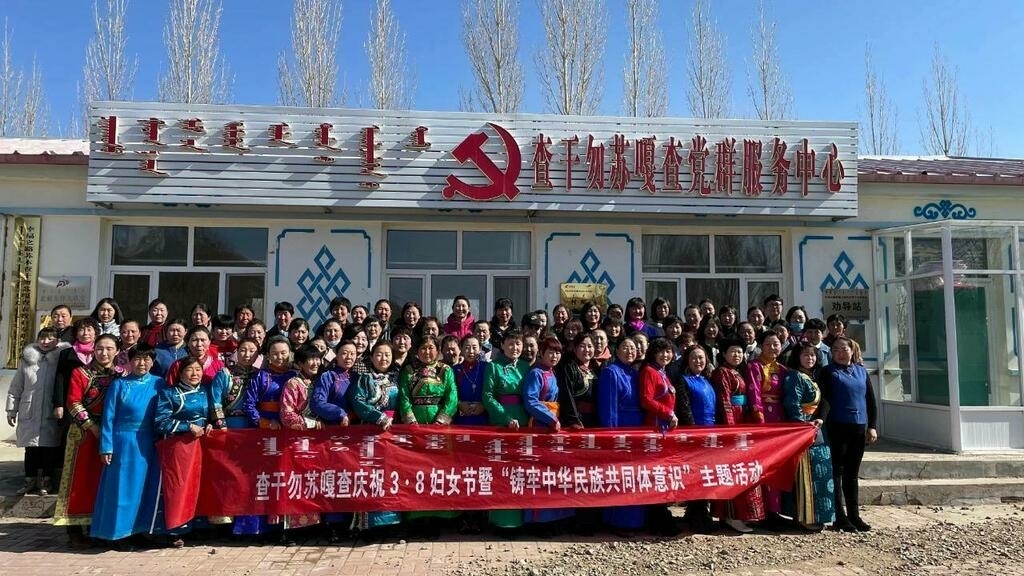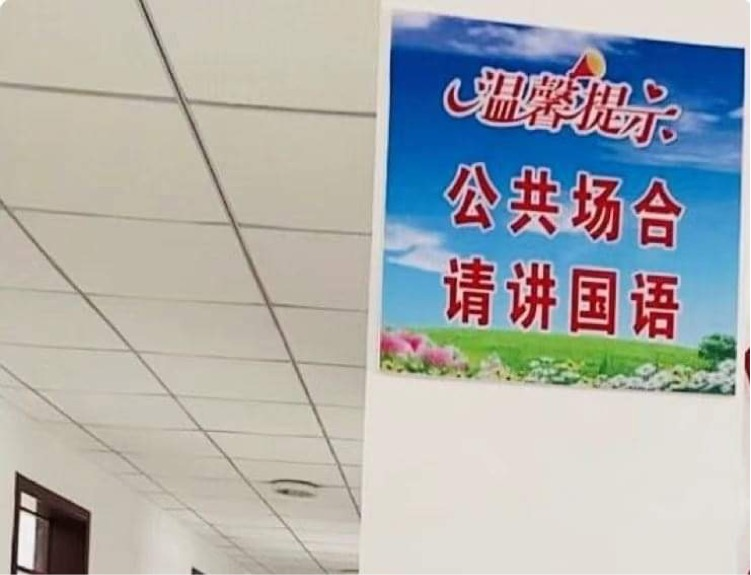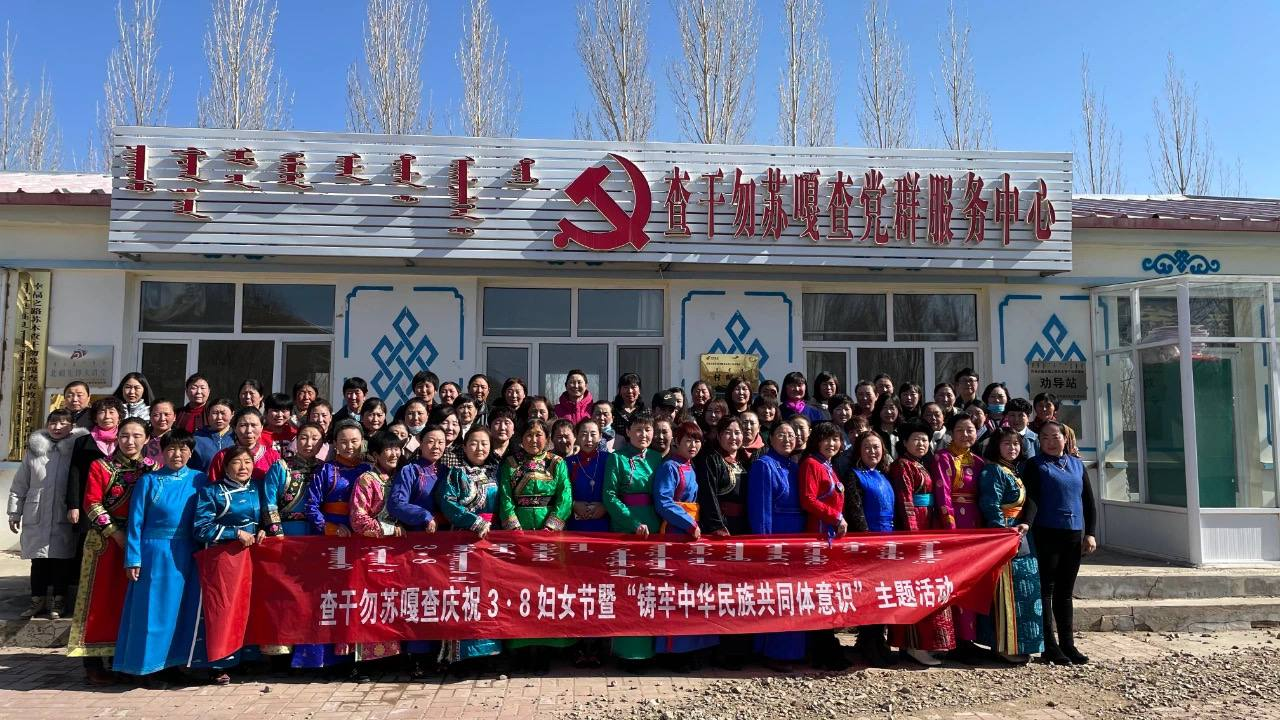| France 24, the Observers |
| September 3, 2021 |
| Liselotte Mas |
|
|
||
|
|
After Tibet and Xinjiang, Beijing is now looking to Inner Mongolia. The autonomous region in China has a strong local culture, at risk of being assimilated into the Han ethnic majority. While there are no reports of internment camps or mass arrests, Mongolian activists say they have been witnessing the first signs of forced assimilation, including the sidelining of the local language, the destruction or banning of cultural symbols, and the introduction of patriotism classes.
In Mongolian elementary and middle schools, students were able to receive an education in their local language until September 2020, when a new policy called for compulsory literature, history and political science courses to be taught in Chinese. This policy also called for students to begin learning Mandarin Chinese one year earlier than in their previous curriculum.
The Inner Mongolian Ministry of Education announced that some of these reforms would be tightened at the start of the school year in September 2021, with new measures including the removal of books on Mongolian history and culture from all primary and secondary education.
For many Mongolians, this is the first step in the forced disappearance of their cultural identity. Thousands of people signed petitions, protested and withdrew their children from schools that are now switching to Chinese. This is the largest Mongolian protest movement of the last decade, according to the Financial Times.
|
|
||
|
|
Authorities violently repressed the protests, causing people in this region of northern China to quietly document and denounce Beijing’s policy of forced assimilation. Some see it as a slippery slope towards the human rights violations the Chinese state has carried out against Tibetans and Uighurs.
The FRANCE 24 Observers team was able to interview two Mongolian students living in Hohhot, the capital of Inner Mongolia. We have chosen to change their names in order to protect their identities.
‘On a day-to-day basis, it's a very different atmosphere from the one I grew up in’
Alatan, a student based in Hohhot, worries about seeing the signs of his culture disappearing on the streets and in daily life.
"I see myself as a Mongol, and proud to be one. I am worried about the future of our people. We are more and more flooded by Chinese culture and the government does everything it can so the new generation will be completely assimilated. It became very clear when they launched the education reforms."
|
|
||
|
In this series of videos released by the Southern Mongolia Human Rights Center in August 2020 (compiled by the FRANCE 24 Observers team), Mongolian protesters chant "Let us Mongolians be who we are,” as they face about 15 police officers. |
"On a day-to-day basis, it's a very different atmosphere from the one I grew up in. People will comment on students who dress in traditional outfits for example."
|
|
||
|
|
"A few weeks ago, the authorities also decided they will remove a statue of a Mongolian scholar, Awang Dandel, who studied in Tibet 300 years ago and was a Buddhist. It is an important monument for students, but it will be removed on the grounds that it had a religious connotation, as the government is opposed to the presence of religious symbols in schools."
|
|
||
|
This video, published in October 2020 by the Southern Mongolia Human Rights Center, shows officials raising the Chinese flag at a settlement in the Horqin district. Located at the following coordinates: 45.049915, 121.509621. |
‘Now, all the cartoons are in Chinese, young children learn very fast’
Naren, another student, fears that the next generation will lose its connection to Mongolian culture completely.
"It is a general policy, the assimilation of Mongolian culture through language. These days, all the cartoons, the advertisements are in Chinese and they praise the Chinese national culture. Young children are learning Chinese very fast, sometimes faster than Mongolian, which is their mother tongue."
‘Some students displayed the Mongolian flag in their rooms, they got into big trouble’
British historian Matthew Dundon lived in Inner Mongolia for ten years. He studied at Hohhot University before leaving the region in July 2021.
"There is more and more propaganda on the streets, and in bus and train stations. It has increased even more in the run-up to the 100th anniversary of the Communist Party, which was celebrated on July 1. Many traditional events and games had to be cancelled to make room for it.
In universities, the last six months have been particularly tense. Some students displayed the Mongolian flag in their rooms in the university residence halls. They got into big trouble.
Many drama clubs had to close down simply because their plays referred to Mongolian culture or lifestyle. One of them, the Darehan Comedy Group, was quite successful throughout the region and had been touring for about fifteen years. I attended one of their shows just before the Covid-19 pandemic in 2020. You could sense the repression to come: the actors had been forced to hold a Chinese flag during the performance, even though it had nothing to do with the script. They were due to give their very last show on June 25, 2021, but found out the day before that it had been cancelled."
Arrests and intimidation by police
All the people based in Inner Mongolia we spoke to said they feared being arrested if they were too openly critical of the government. Many others did not wish to answer our questions for the same reason.
These fears are explained by the intimidation and numerous arrests of Mongolians who opposed the 2020 school reforms. At the beginning of September 2020, authorities in the district of Horqin, in southeastern Inner Mongolia, published a list of 129 people suspected of "reprehensible behaviour" and offered a reward equivalent to 125 euros for aiding in their arrest.
It was the same thing in Bayannuur, in western Inner Mongolia, where authorities offered a reward equivalent to 1,300 euros for the arrest of four people who had used the messaging app WeChat to post about Mongolian school textbooks and organise petitions against the school reforms. They were accused of spreading "fake news".
Patriotic ‘brainwashing’
In addition to these arrests, many activists denounce a policy of assimilation through "patriotism courses" organised throughout the region, particularly for Mongolian adults in rural areas.
|
|
||
|
|
On the social network Douyin, numerous videos filmed by Chinese officials show their efforts to "inculcate party values" in the Mongolian population of the region.
|
|
||
|
In these videos filmed between late 2019 and July 2021 and posted on Douyin by a Chinese official based in Xilingol district, many local youths participate in courses and activities based around the ideology of the Chinese Communist Party. It also shows various events – organised by the CCP – that mix Chinese and Mongolian cultures, as well as an advertisement for a local public bank featuring similar values. |
‘The government believes that local officials should have been able to "tame" the Mongolians’
For Engehebatu Togochog, president of the New York-based Southern Mongolia Human Rights Center, the Chinese government is trying to suppress any notion of autonomy and uniqueness in Inner Mongolia in order to avoid uprisings similar to those of the Tibetans and Uighurs.
"These training, or rather brainwashing, programmes are a direct response to the protest movement against school reforms. For the central government, local officials should have been able to "tame" the Mongolians and silence the protesters.
So they decided to go all out and organised these trainings everywhere, first for civil servants, teachers, students and party members. Then they started to target the population directly, even in the most remote rural areas."
"These trainings can last from one to three months and are followed by an exam. The participants have to convince the teachers that they accept the Chinese nationality and culture, the Communist Party and all the ideology that goes along with it.
We were able to obtain a document detailing the content of these trainings and we noticed an interesting point: on numerous occasions, it uses Xi Jinping's statements on Xinjiang as an example. This makes it clear that, theoretically, we could be the next Uighurs."
Authorities have made the parallel between Mongolians and Uighurs before. Following the September 2020 protest movement, the Inner Mongolian Ministry of Education explained: "It is the will of the country to use identical textbooks nationwide. The two autonomous regions of Tibet and Xinjiang have also used them. As a model autonomous region, our region will implement these reforms with determination [...]."
Widespread censorship on social networks
Another fundamental problem for Engehebatu Togochog is the restriction on freedom of expression:
"The situation is very tense, it is very difficult to get information. Many communication channels have been blocked."
This is particularly true of the Mongolian-language social network Bainu, which Chinese authorities blocked during the 2020 protest movement.
‘My Mongolian content is systematically removed from Chinese social networks’
Naren, the student in Hohhot, has directly experienced this censorship on Chinese platforms:
"For the past few months, I have noticed that when I want to publish content on Blibli or Douyin, it is systematically removed by administrators. When I ask them why, they tell me that the music I play in the background is in Mongolian and that users can’t understand what is being said. But there are plenty of videos with music in English or Spanish and it doesn't seem to be a problem.
I think they want to avoid any emphasis on our culture, or they are afraid that we will circulate political messages they can’t understand. But the result is frustrating because we can’t express ourselves anymore."
A forced fusion of Chinese and Mongolian cultures
Many activists also denounce the destruction or alteration of Mongolian cultural monuments, the endangering of traditions such as wrestling or the removal of Mongolian language inscriptions from certain public places. But above all, they are alarmed by a centralised policy of "diluting" Mongolian culture with Chinese culture through "cultural fusions”, seen as offensive.
|
|
||
|
The video, posted on Facebook in September 2020, shows a pendant that combines two cultural symbols: Genghis Khan, founder of the Mongol Empire, and Mao Zedong, founder of the People's Republic of China. According to the person who posted the video, the pendant was sold in a "cultural market" in the city of Hohhot. |
On social networks, many videos show people holding Chinese ceremonies in front of statues of Genghis Khan, the famed Mongol conqueror, or in front of ovoos, traditional shamanic prayer spaces. Television stations broadcast performances mixing Mongolian culture and Chinese nationalism.
For Engehebatu Togochog, this policy is part of a national ideological system that is difficult to combat.
"The government often refers to the 55 minorities – each one as unique as a pomegranate seed, but belonging to the whole – but in reality, we have no right to identify ourselves as Mongols.
This is all part of a new theory, the "ethnic policy, second generation", and includes the idea of merging all minorities into one big "family" called Zhonghua minzu (the Chinese nation).
The problem is that it is not about creating a new identity, but simply about imposing the Han identity on all other groups."








 Beyond
Great Walls: Environment, Identity, and Development on the Chinese
Grasslands of Inner Mongolia
Beyond
Great Walls: Environment, Identity, and Development on the Chinese
Grasslands of Inner Mongolia China's
Pastoral Region: Sheep and Wool, Minority Nationalities, Rangeland
Degradation and Sustainable Development
China's
Pastoral Region: Sheep and Wool, Minority Nationalities, Rangeland
Degradation and Sustainable Development The
Ordos Plateau of China: An Endangered Environment (Unu Studies on
Critical Environmental Regions)
The
Ordos Plateau of China: An Endangered Environment (Unu Studies on
Critical Environmental Regions)